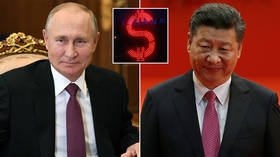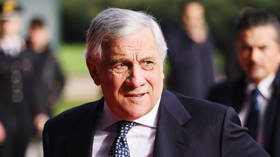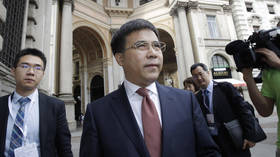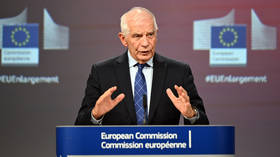A new & unprecedented problem for Russia’s middle class as country’s economy has become ‘too normal’ for simple investors
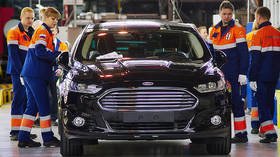
Russia’s middle class has a new dilemma, and the central bank’s to blame. This time, it’s not quite as dramatic as the governor cancelling all pre-‘92 bank notes overnight, nor is it a ruble crash from yet another oil-price shock.
No, the problem this time is Russia’s economy is becoming too ‘normal’ and interest rates have fallen so low that the traditional safe haven of choice – high yielding bank deposit accounts – no longer pay enough to make them interesting to retail punters.
The solution? Russians have been opening trading accounts with the Moscow Exchange (MOEX) in their millions and buying stocks as a better place to store their growing savings.
Also on rt.com The end of Ostpolitik: Dream of Europe ‘whole & free’ over as Russian-German friendship fades & Moscow pivots to AsiaNothing says “developed nation” like investing in the stock market, and Russia was upgraded to the status of “high income country” by the World Bank in 2013. But its people have never paid much attention to the equity market, which is still a relatively new thing after over 70 years of communism.
For most of the last three decades the main problem Russians faced was how to preserve the value of their savings. With inflation running in double digits since the shock therapy of the 1990s and constantly eating into the value of the ruble, most chose to deposit their cash with banks paying high interest rates.
That has all changed in the last two years. For the first time since the fall of the Soviet Union, the central bank’s prime lending rate has dropped to “normal” country levels. The Central Bank made an emergency hike to 17 percent in the midst of the 2014 oil price shock and subsequent devaluation of the ruble, but has been cutting rates ever since then to the current 4.25 percent its lowest level in modern history.
That has caused a problem for savers. With inflation rising to 4.4 percent, in November, the rates that commercial banks are now offering mean savers make hardly any return. So, for the first time the people have started casting around of a better investment.
Back in the wild days of the 90s Russians would buy things like washing machines or cars if they came into some money as they keep their value and are easy to sell second hand. Buying dollars and keeping them under the mattress has also been a staple.
Boris Yeltsin introduced the first mutual funds (known as PIFs) in 1996 and firms like Franklin Tempetlon, owned by investor legend Mark Mobius, rushed in to what they hoped would be a bonanza. Except the Russian economy crashed two years later and the leading RTS index fell from around 500 to a low of 38 a few months later.
The next big push to get Russians to buy shares was the so-called “People’s IPO” when state-owned bank VTB organized a flotation in May 2007. The bank raised over $8bn in an offer priced at 13.6 kopecks ($0.005), and over 100,000 retail investors took part. The Russian economy melted down again just over a year later cutting the value of VTB’s stock in half. Twelve years later and VTBs stock is still worth the same $0.005 it was worth at IPO, at current exchange rates, but it has risen in ruble terms.
With this history it is no wonder that Russians have remained wary of the stock market.
Also on rt.com Global food prices hit six-year high as Covid-19 pandemic turns into major driver of food inequalityAnd that is what is so remarkable about the change. MOEX reports that the number of individual accounts opened on the main Russian exchange more than doubled in the year between September 2019 and 2020 to reach 2.9 million, with half a million of them opened in just the third quarter of this year alone. MOEX has also reported record numbers of transactions with more than 1.2 million Russians making at least one buy or sell decision. Local investment banks report that the total number of retail brokerage accounts just topped eight million.
Part of the interest is also due to the fact the Russian stock market has come back to life. After being moribund since the imposition of sanctions after Russia’s reabsorption of Crimea in 2014, the RTS index started growing strongly at the start of this year after many of Russia’s blue-chip stocks doubled in value the year before.
The market was knocked back sharply by the multiple shocks this year, but since the start of November it has started to rally again strongly as investors anticipate the end of the pandemic. The Institute of International Finance (IIF) reports that the inflows into emerging markets (EM) stocks, including Russia, was a record high in the third quarter and anticipates the inflows to continue.
“The fourth quarter of 2020 is likely to be the strongest quarter for EM inflows since the first quarter of 2013, i.e. since just before the ‘taper tantrum’,” IIF said in a recent note.
Russia’s annual Santa Rally has got underway when traditional the value of Russian equities gain some 20 percent during the winter and this year will enjoy the tailwind of a growing relief rally associated with the end of the pandemic.
The country's retail investors have been pouring money into the stock market in anticipation and now the foreign investors have joined the party. International stock markets just saw the biggest rotation trade on record when investors sold out of their “stay-at-home” pandemic-proof stocks like Netflix and pharmaceuticals, to buy into “back-to-work” stocks like Boeing and manufacturers. Global emerging markets are attracting the most attention as they are likely to be the biggest winners from the change and took in over $25 billion in just the last four weeks, reports BCS Global Markets.
“Vaccine-induced optimism has prompted global investors to start picking up cyclical assets, including Russian stocks. The RTS Index jumped 23% in November,” BCS GM said in a note. “We estimate foreign inflows at $2.5 billion during the month... Overall, this development is good news for the market, as foreign purchases leave local retail investors with plenty of cash that they can deploy at any moment.”
And Russian investors are not just buying Russian stocks. Ultimately, Russian equities remain volatile but in August MOEX introduced the option of buying international stocks via the local exchange. This encouraged investors to snap up the likes of Apple, Boeing, Amazon and Netflix, among others. The volume of these investments has already caused the CBR to comment that if it continues the outflows may start to affect the value of the ruble. But the punters are looking for another option to protect their savings with a more solid investment that can also (hopefully) make them a nice return too.
Like this story? Share it with a friend!
The statements, views and opinions expressed in this column are solely those of the author and do not necessarily represent those of RT.
The statements, views and opinions expressed in this column are solely those of the author and do not necessarily represent those of RT.
